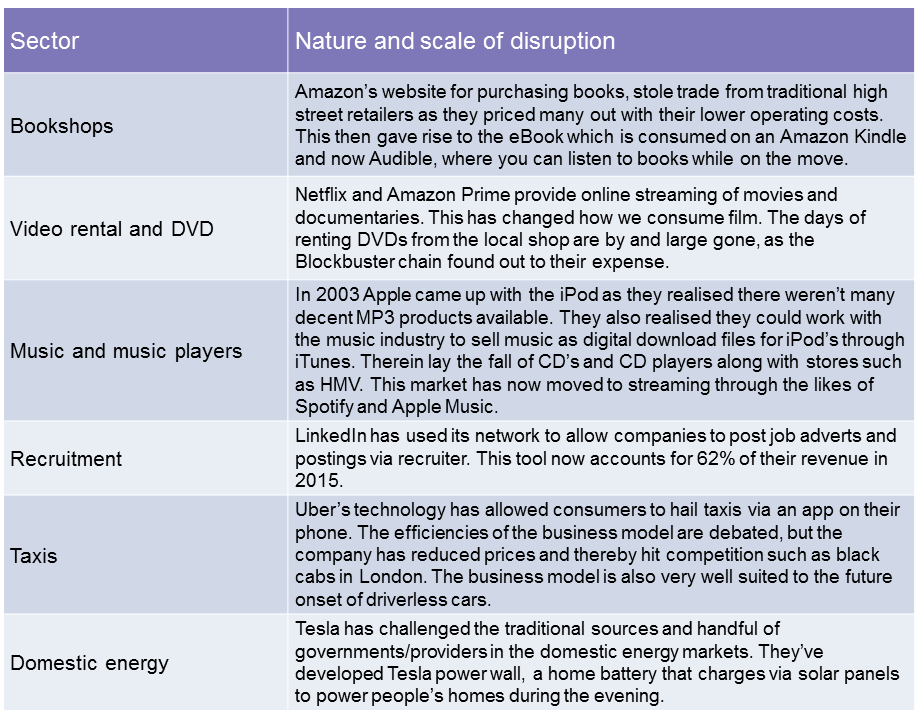
There was an interesting article written by Rohan Silva in the Evening Standard recently that appeared to go against trend, the real world is fighting back against being eaten by technology. Or, perhaps it was notifying readers of a new trend, whereby we’re seeing something of a backlash against the tech takeover. Could it be that things are reverting back to the real world? Is this just a short term consumer backlash or the beginning of something significant?
If as a business owner you use e-commerce as part of your trade and/or sell to consumers via both the electronic and real world, then it would be worth checking this out. A purely tech based business model may no longer be enough if there’s a re-balancing taking place between the real and digital worlds.
Silva’s article is particularly interesting because it starts with influential Silicon Valley investor, Marc Andreessen’s quote from 2011 in which he described software as eating the world. He was referring back then to how new, digital technologies were driving efficiencies and disrupting industries across the board. It was well founded as the table below highlights the areas where this has occurred in the last 15 years:

For all that though, some of the key tech players now appear to be changing tact and adding real world strands to their businesses as Silva explains:
"If you look at shopping, many of the top e-commerce brands, such as Warby Parker and Moo.com, are opening physical stores. Only last week, the granddaddy of all online retailers, Amazon.com, announced the opening of its first bookstore in Seattle, with a view to opening more around the world.”
Four reasons behind Amazon's decision to open a physical bookshop https://t.co/bmhnLrV8lt pic.twitter.com/6uNvhs5DJ2
— Econsultancy (@Econsultancy) November 9, 2015
Could it be that consumers have grown tired of faceless websites, some of which offer little to no human contact due to their lack of contact details and accountability? Might we hark to the days of face to face conversations with shop keepers and customer service representatives who might just answer our queries, deal with our problems and actually help us? Has the tech and online world grown too dull and soulless?
We now seem to miss physical objects with their unique qualities. For example, the multi sensory experience of a book is cited as being the reason why we retain information from it far better than we do when reading off screen. Many consumers have been connected to the internet via some form of device on a frightening frequency in the last 5 years. Just consider the diagram below for the amount of content that is uploaded and therefore consumed on the net. It’s created all manor of social challenges and it would seem many are beginning to realise that constant surfing of the web doesn’t necessarily lead to a more fulfilling life.
Yes, the internet is a great thing in many ways, particularly with our ability to access information from almost the entire bank of human knowledge at the click of a button. However, in becoming more connected online we appear to have come more disconnected off it and it appears people are rcognising that. The result is a craving for immersive experiences and human interaction.
Perhaps the vast amounts of content on the internet and the constant reminders, nudges, emails and social feeds means at times we need an escape from this world of constant content. Faced with that prospect businesses need to plan both digitally and in terms of real world experience. Whatever your sector, human interaction has to kick in somewhere in the buyers journey.
If you’re a retailer or in the hospitality trade for example, then the customer experience at your venue will be essential to building your brand, reputation, footfall and the holy grail of repeat custom. We’ve said it before on this blog but for owners in these and other markets, it’s the experience customers enjoy and value that will lead them to return to your business.
In many ways the customer experience you create is what can really separate you from your competitors. In a majority of cases we crave interaction and friendly faces. That just goes to highlight the key role your staff play in your organisation. A large part of determining your success will be governed by employing, training and retaining the best staff.
After all it’s your staff that steer the customer experience which means they’re likely to be the ones who drive sales in your company. Crucial to this therefore is the need to train and upskill them so that they come up with intuitive ways to improve the experience, help develop your product or service and generate turnover. Remember, the best businesses retain their staff long term. For the customer that means they deal with the same friendly, helpful people every time they visit your premises or interact with your company.
This isn’t the end of technology disruption. Far from it. But it’s clear there’s something of a rebalancing phase taking place in consumer preferences. As Silva points out, that might go some way to explaining the success of engaging experiences such as live music, theatre and Secret Cinema. Ignore the real world at your peril!
The content of this post is up to date and relevant as at 04/12/2015.
Please be aware that information provided by this blog is subject to regular legal and regulatory change. We recommend that you do not take any information held within our website or guides (eBooks) as a definitive guide to the law on the relevant matter being discussed. We suggest your course of action should be to seek legal or professional advice where necessary rather than relying on the content supplied by the author(s) of this blog.
Click below for office location details
leave a comment -